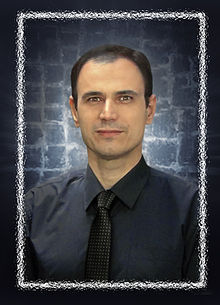| References: | AHUJA, M. K., GALLETTA, D. F. & CARLEY, K. M. (2003) Individual Centrality and Performance in Virtual R&D Groups: An Empirical Study Management Science, 49, 21-38.
AKGUN, A. E., BYRNE, J. C., LYNN, G. S. & KESKIN, H. (2007) New product development in turbulent environments: Impact of improvisation and unlearning on new product performance. Journal of Engineering and Technology Management, 24, 203–230.
ALMEIDA, L. & MIGUEL, P. (2007) Managing new product development process: a proposal of a theoretical model about their dimensions and the dynamics of the process. Complex Systems Concurrent Engineering. Springer London.
ANDERSON, A. H., MCEWAN, R., BAL, J. & CARLETTA, J. (2007) Virtual team meetings: An analysis of communication and context. Computers in Human Behavior, 23, 2558–2580.
ATUAHENE-GIMA, K. (2003) The effects of centrifugal and centripetal forces on product development speed and quality: how does problem solving matter? . Academy of Management Journal, 46, 359-373.
BADRINARAYANAN, V. & ARNETT, D. B. ( 2008) Effective virtual new product development teams: an integrated framework. Journal of Business & Industrial Marketing, 23, 242-248.
BERGIEL, J. B., BERGIEL, E. B. & BALSMEIER, P. W. (2008) Nature of virtual teams: a summary of their advantages and disadvantages. Management Research News, 31, 99-110.
BIEMANS, W. G. (2003) A picture paints a thousand numbers: a critical look at b2b product development research Business & Industrial Marketing, 18, 514-528.
CASCIO, W. F. (2000) Managing a virtual workplace. The Academy of Management Executive, 14, 81-90.
CHEN, H. H., KANG, Y. K., XING, X., LEE, A. H. I. & TONG, Y. (2008a) Developing new products with knowledge management methods and process development management in a network. Computers in Industry, 59, 242–253.
CHEN, H. H., LEE, A. H. I., WANG, H. Z. & TONG, Y. (2008b) Operating NPD innovatively with different technologies under a variant social environment. Technological Forecasting & Social Change, 385–404.
CHEN, T.-Y. (2008) Knowledge sharing in virtual enterprises via an ontology-based access control approach. Computers in Industry, Article In press, No of Pages 18.
CHEN, T. Y., CHEN, Y. M. & CH, H. C. (2008c) Developing a trust evaluation method between co-workers in virtual project team for enabling resource sharing and collaboration. Computers in Industry 59, 565-579.
CHESBROUGH, H. W. & TEECE, D. J. (2002) Organizing for Innovation: When Is Virtual Virtuous? Harvard Business Review Article, August 127-135.
CHUDOBA, K. M., WYNN, E., LU, M., WATSON-MANHEIM & BETH, M. (2005) How virtual are we? Measuring virtuality and understanding its impact in a global organization. Information Systems Journal, 15, 279-306.
COOPER, R. G. (2006) Managing Technology Development Projects. Research Technology Management, 49, 23-31.
COOPER, R. G. (2008) Perspective: The Stage-Gate® Idea-to-Launch Process—Update, What's New, and NexGen Systems. Journal of Product Innovation Management, 25, 213-232.
CRISCUOLO, P. (2005) On the road again: Researcher mobility inside the R&D network. Research Policy, 34, 1350–1365
CUMMINGS, J. L. & TENG, B. S. (2003) Transferring R&D knowledge: the key factors affecting knowledge transfer success. Journal of Engineering Technology Management, 39–68.
DAVIS, C. H. & SUN, E. (2006) Business Development Capabilities in Information Technology SMEs in a Regional Economy: An Exploratory Study. The Journal of Technology Transfer, 31, 145-161.
DURMUSOGLU, S. S. & CALANTONE, R. J. (2006) Is more information technology better for new product development? Product & Brand Management, 15, 435-441.
EPPINGER, S. D. & CHITKARA, A. R. (2006) The New Practice of Global Product Development. MIT Sloan Management Review, 47, 22-30.
ETTLIE, J. E. & ELSENBACH, J. M. (2007) Modified Stage-Gate Regimes in New Product Development. Journal of Product Innovation Management, 24, 20-33.
FLORES, M. (2006) IFIP International Federation for Information Processing. Network-Centric Collaboration and Supporting Fireworks. Boston, Springer.
FULLER, M. A., HARDIN, A. M. & DAVISON, R. M. (2006) Efficacy in Technology-Mediated Distributed Team Journal of Management Information Systems, 23, 209-235.
FURST, S. A., REEVES, M., ROSEN, B. & BLACKBURN, R. S. (2004) Managing the life cycle of virtual teams. Academy of Management Executive, 18, 6-20.
GASSMANN, O. & VON ZEDTWITZ, M. (2003) Trends and determinants of managing virtual R&D teams. R&D Management 33, 243-262.
GAUDES, A., HAMILTON-BOGART, B., MARSH, S. & ROBINSON, H. (2007) A Framework for Constructing Effective Virtual Teams The Journal of E-working 1, 83-97
GE, Z. & HU, Q. (2008) Collaboration in R&D activities: Firm-specific decisions. European Journal of Operational Research 185, 864-883.
GONZáLEZ, F. J. M. & PALACIOS, T. M. B. (2002) The effect of new product development techniques on new product success in Spanish firms. Industrial Marketing Management 31, 261-271.
GUNIŠ, A., ŠIŠLáK, J. & VALČUHA, Š. (2007) Implementation Of Collaboration Model Within SME's. IN CUNHA, P. F. & MAROPOULOS, P. G. (Eds.) Digital Enterprise Technology-Perspectives and Future Challenges. Springer US.
HERTEL, G. T., GEISTER, S. & KONRADT, U. (2005) Managing virtual teams: A review of current empirical research. Human Resource Management Review, 15, 69–95.
HOSSAIN, L. & WIGAND, R. T. (2004) ICT Enabled Virtual Collaboration through Trust. Journal of Computer-Mediated Communication, 10.
HUANG, X., SOUTAR, G. N. & BROWN, A. (2004) Measuring new product success: an empirical investigation of Australian SMEs. Industrial Marketing Management, 33, 117– 123.
HUNSAKER, P. L. & HUNSAKER, J. S. (2008) Virtual teams: a leader's guide. Team Performance Management, 14, 86-101.
JACOBSA, J., MOLL, J. V., KRAUSE, P., KUSTERS, R., TRIENEKENS, J. & BROMBACHER, A. (2005) Exploring defect causes in products developed by virtual teams Information and Software Technology, 47, 399-410.
JAIN, V. K. & SOBEK, D. K. (2006) Linking design process to customer satisfaction through virtual design of experiments. Research in Engineering Design, 17 59-71.
JARVENPAA, S. L. & LEIDNER, D. E. (1999) Communication and Trust in Global Virtual Teams. Organization Science 10, 791 - 815
JOHANSEN, K. (2005) Collaborative Product Introduction within Extended Enterprises. Department of Mechanical Engineering. Linköping, Sweden, Linköpings Universitet.
JOHNSON, P., HEIMANN, V. & O’NEILL, K. (2001) The “wonderland” of virtual teams. Journal of Workplace Learning, 13, 24 - 30.
KAFOUROS, M. I., BUCKLEY, P. J., SHARP, J. A. & WANG, C. (2008) The role of internationalization in explaining innovation performance. Technovation, 28, 63–74.
KANKANHALLI, A., TAN, B. C. Y. & WEI, K.-K. (2006) Conflict and Performance in Global Virtual Teams. Journal of Management Information Systems, 23, 237-274.
KRATZER, J., LEENDERS, R. & ENGELEN, J. V. (2005) Keeping Virtual R&D Teams Creative. Industrial Research Institute, Inc., March-April, 13-16.
KUSAR, J., DUHOVNIK, J., GRUM, J. & STARBEK, M. (2004) How to reduce new product development time. Robotics and Computer-Integrated Manufacturing 20, 1-15.
LAM, P.-K., CHIN, K.-S., YANG, J.-B. & LIANG, W. (2007) Self-assessment of conflict management in client-supplier collaborative new product development. Industrial Management & Data Systems, 107, 688 - 714.
LEE-KELLEY, L. & SANKEY, T. (2008) Global virtual teams for value creation and project success: A case study. International Journal of Project Management 26, 51–62.
LEENDERS, R. T. A. J., ENGELEN, J. M. L. V. & KRATZER, J. (2003) Virtuality, communication, and new product team creativity: a social network perspective. Journal of Engineering and Technology Management, 20, 69–92.
LIPNACK, J. & STAMPS, J. (2000) Why The Way to Work. Virtual Teams: People Working across Boundaries with Technology. Second Edition ed. New York, John Wiley & Sons.
LIU, B. & LIU, S. (2007) Value Chain Coordination with Contracts for Virtual R&D Alliance Towards Service. The 3rd IEEE International Conference on Wireless Communications, Networking and Mobile Computing, WiCom 2007. Shanghai, China, IEEE Xplore.
LUREY, J. S. & RAISINGHANI, M. S. (2001) An empirical study of best practices in virtual teams Information & Management, 38, 523-544.
MACCORMACK, A., VERGANTI, R. & IANSITI, M. (2001) Developing Products on "Internet Time": The Anatomy of a Flexible Development Process. MANAGEMENT SCIENCE, 47, 133-150.
MARTINEZ-SANCHEZ, A., PEREZ-PEREZ, M., DE-LUIS-CARNICER, P. & VELA-JIMENEZ, M. J. (2006) Teleworking and new product development. European Journal of Innovation Management, 9, 202-214.
MARTINS, L. L., GILSON, L. L. & MAYNARD, M. T. (2004) Virtual teams: What do we know and where do we go from here? Journal of Management, 30, 805–835.
MAY, A. & CARTER, C. (2001) A case study of virtual team working in the European automotive industry. International Journal of Industrial Ergonomics, 27, 171-186.
MCDONOUGH, E. F., KAHN, K. B. & BARCZAK, G. (2001) An investigation of the use of global, virtual, and collocated new product development teams. The Journal of Product Innovation Management, 18, 110–120.
MERALI, Y. & DAVIES, J. (2001) Knowledge Capture and Utilization in Virtual Communities. International Conference On Knowledge Capture, K-CAP’01. Victoria, British Columbia, Canada.
MULEBEKE, J. A. W. & ZHENG, L. (2006) Incorporating integrated product development with technology road mapping for dynamism and innovation. International Journal of Product Development 3, 56 - 76.
OJASALO, J. (2008) Management of innovation networks: a case study of different approaches. European Journal of Innovation Management, 11, 51-86.
OLSON-BUCHANAN, J. B., RECHNER, P. L., SANCHEZ, R. J. & SCHMIDTKE, J. M. (2007) Utilizing virtual teams in a management principles course. Education + Training, 49, 408-423.
ORTIZ DE GUINEA, A., WEBSTER, J. & STAPLES, S. ( 2005) A Meta-Analysis of the Virtual Teams Literature. Symposium on High Performance Professional Teams Industrial Relations Centre. School of Policy Studies, Queen’s University, Kingston, Canada.
OTTOSSON, S. (2004) Dynamic product development -- DPD. Technovation, 24, 207-217.
OZER, M. (2000) Information Technology and New Product Development Opportunities and Pitfalls. Industrial Marketing Management 29, 387-396.
OZER, M. (2004) The role of the Internet in new product performance: A conceptual investigation. Industrial Marketing Management 33, 355– 369.
OZER, M. (2006) New product development in Asia: An introduction to the special issue. Industrial Marketing Management, 35, 252-261.
PAUL, S., SEETHARAMAN, P., SAMARAH, I. & MYKYTYN, P. P. (2004) Impact of heterogeneity and collaborative conflict management style on the performance of ynchronous global virtual teams. Information & Management, 41, 303-321.
PAUL, S., SEETHARAMAN, P., SAMARAH, I. & PETER MYKYTYN, J. ( 2005 ) Understanding Conflict in Virtual Teams: An Experimental Investigation using Content Analysis. 38th Hawaii International Conference on System Sciences. Hawaii.
PAULEEN, D. J. (2003) An Inductively Derived Model of Leader-Initiated Relationship Building with Virtual Team Members. Journal of Management Information Systems, 20, 227-256.
PAWAR, K. S. & SHARIFI, S. (1997) Physical or virtual team collocation: Does it matter? International Journal of Production Economics 52, 283-290.
PENA-MORA, F., HUSSEIN, K., VADHAVKAR, S. & BENJAMIN, K. (2000) CAIRO: a concurrent engineering meeting environment for virtual design teams. Artifcial Intelligence in Engineering 14, 203-219.
PICCOLI, G., POWELL, A. & IVES, B. (2004) Virtual teams: team control structure, work processes, and team effectiveness. Information Technology & People, 17, 359 - 379.
PIHKALA, T., VARAMAKI, E. & VESALAINEN, J. (1999) Virtual organization and the SMEs: a review and model development. Entrepreneurship & Regional Development, 11, 335 - 349.
POEHLER, L. & SCHUMACHER, T. (2007) The Virtual Team Challenge: Is It Time for Training? PICMET 2007. Portland, Oregon - USA
PRASAD, K. & AKHILESH, K. B. (2002) Global virtual teams: what impacts their design and performance? Team Performance Management, 8, 102 - 112.
PRECUP, L., O'SULLIVAN, D., CORMICAN, K. & DOOLEY, L. (2006) Virtual team environment for collaborative research projects. International Journal of Innovation and Learning, 3, 77 - 94
RABELO, L. & JR., T. H. S. (2005) Sustaining growth in the modern enterprise: A case study. Jornal of Engineering and Technology Management JET-M, 22 274-290.
RAGATZ, G. L., HANDFIELD, R. B. & PETERSEN, K. J. (2002) Benefits associated with supplier integration into new product development under conditions of technology uncertainty. Journal of Business Research, 55, 389-400.
REJEB, H. B., MOREL-GUIMARAES, L. & BOLY, V. (2008) A new methodology based on Kano Model for needs evaluation and innovative concepts comparison during the front-end phases. The Third European Conference on Management of Technology, EUROMOT 2008. Nice, France.
RICE, D. J., DAVIDSON, B. D., DANNENHOFFER, J. F. & GAY, G. K. (2007) Improving the Effectiveness of Virtual Teams by Adapting Team Processes. Computer Supported Cooperative Work (CSCW), 16, 567-594.
RODRIGUEZ, K. & AL-ASHAAB, A. (2005) Knowledge web-based system architecture for collaborative product development. Computers in Industry, 56, 125-140.
ROSEN, B., FURST, S. & BLACKBURN, R. (2007) Overcoming Barriers to Knowledge Sharing in Virtual Teams. Organizational Dynamics, 36, 259–273.
SAMARAH, I., PAUL, S. & TADISINA, S. (2007) Collaboration Technology Support for Knowledge Conversion in Virtual Teams: A Theoretical Perspective. 40th Hawaii International Conference on System Sciences (HICSS). Hawai.
SCHMIDT, J. B., MONTOYA-WEISS, M. M. & MASSEY, A. P. (2001) New product development decision-making effectiveness: Comparing individuals, face-to-face teams, and virtual teams. Decision Sciences, 32, 1-26.
SHACHAF, P. (2008) Cultural diversity and information and communication technology impacts on global virtual teams: An exploratory study. Information & Management, 45, 131-142.
SHANI, A. B., SENA, J. A. & OLIN, T. (2003) Knowledge management and new product development: a study of two companies. European Journal of Innovation Management, 6, 137-149.
SORLI, M., STOKIC, D., GOROSTIZA, A. & CAMPOS, A. (2006) Managing product/process knowledge in the concurrent/simultaneous enterprise environment. Robotics and Computer-Integrated Manufacturing, 22, 399–408.
SRIDHAR, V., NATH, D., PAUL, R. & KAPUR, K. (2007) Analyzing Factors that Affect Performance of Global Virtual Teams. Second International Conference on Management of Globally Distributed Work Indian Institute of Management Bangalore, India.
STARBEK, M. & GRUM, J. (2002) Concurrent engineering in small companies. International Journal of Machine Tools and Manufacture, 42, 417-426.
STOCK, G. N. & TATIKONDA, M. V. (2004) External technology integration in product and process development. International Journal of Operations & Production Management, 24, 642-665.
SUSMAN, G. I., GRAY, B. L., PERRY, J. & BLAIR, C. E. (2003) Recognition and reconciliation of differences in interpretation of misalignments when collaborative technologies are introduced into new product development teams. Journal of Engineering and Technology Management, 20, 141–159.
TAIFI, N. (2007) Organizational Collaborative Model of Small and Medium Enterprises in the Extended Enterprise Era: Lessons to Learn from a Large Automotive Company and its dealers’ Network. Proceedings of the 2nd PROLEARN Doctoral Consortium on Technology Enhanced Learning, in the 2nd European Conference on Technology Enhanced Learning. Crete, Greece, CEUR Workshop Proceedings.
VACCARO, A., VELOSO, F. & BRUSONI, S. (2008) The Impact of Virtual Technologies on Organizational Knowledge Creation: An Empirical Study. Hawaii International Conference on System Sciences. Proceedings of the 41st Annual Publication
VILASECA-REQUENA, J., TORRENT-SELLENS, J. & JIME´NEZ-ZARCO, A. I. (2007) ICT use in marketing as innovation success factor-Enhancing cooperation in new product development processes. European Journal of Innovation Management, 10, 268-288.
WAGNER, S. M. & HOEGL, M. (2006) Involving suppliers in product development: Insights from R&D directors and project managers. Industrial Marketing Management, 35, 936–943.
ZAKARIA, N., AMELINCKX, A. & WILEMON, D. (2004) Working Together Apart? Building a Knowledge-Sharing Culture for Global Virtual Teams. Creativity and Innovation Management, 13, 15-29. |
|---|



 Récupérer au format
Récupérer au format










![[texts]](http://archive.org/images/mediatype_texts.gif)






